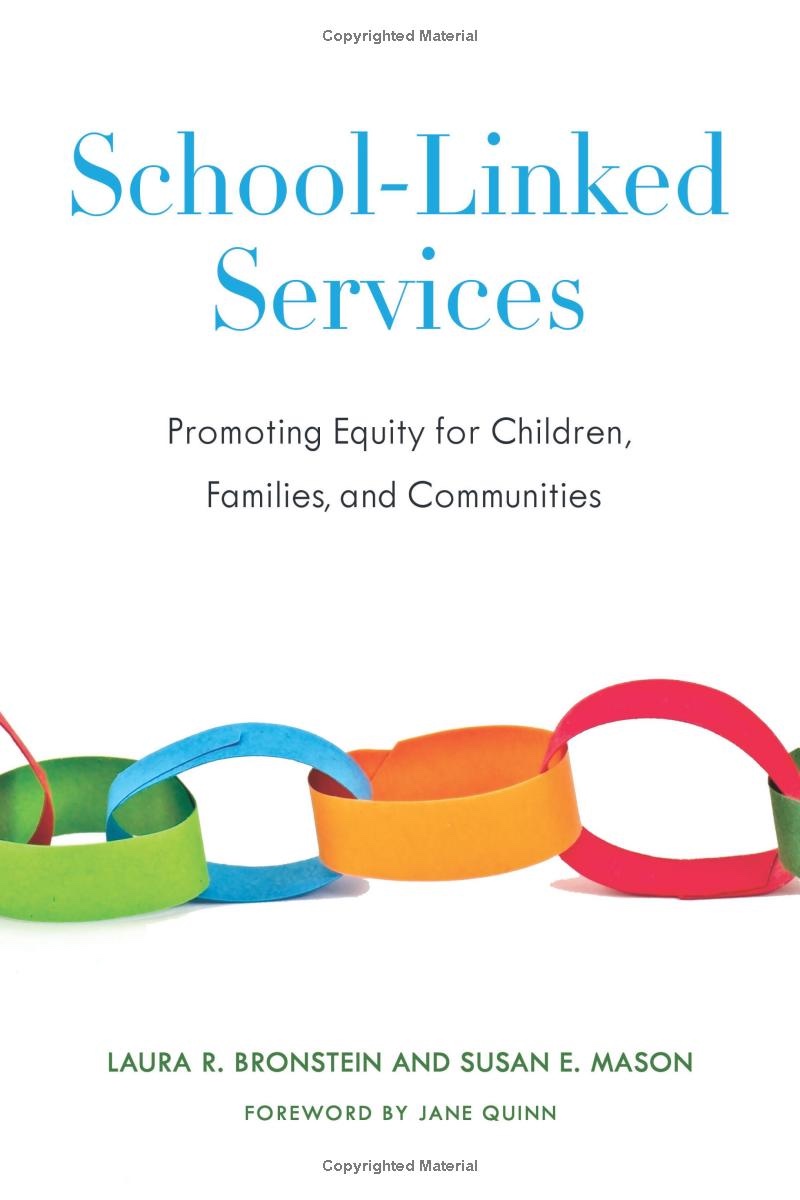
School-Linked Services: Promoting Equity for Children, Families, and Communities by Laura Bronstein and Susan Mason contains extensive advice for anyone interested in linking a school with one or more other service providers in their community. It offers summaries of successful programs and demonstrates how schools with linkages out perform schools with similar demographics that lack linkages in many ways. This is a must-read for leaders of any organization that serves schools.
Introduction
- This book consolidates the available literature on this topic along with a wide range of conversations with diverse key informants. In doing so it illustrates how partnerships between schools and communities support educational success. It covers a wide range of types of school-linked services and how they can break the cycle of poverty.
- They aim to provide enrichment activities that are often only available at schools serving wealthier populations. The services include after-school and summer programs, early childhood education, health and mental health services, family engagement, youth leadership programs, and others.
1. Making the Case for School-Linked Services
- A teacher’s ability to teach can clearly be hampered by issues outside their control. We must not view a student’s academic struggles in isolation from external factors. Low academic achievement is highly correlated with poverty. Distracted, hungry, worried, and ill children have a more difficult time learning. Absenteeism and mobility add to these problems. Partnerships must be fruitful, as schools cannot afford to spend resources just to have a partner.
- The Center for Disease Control has a model called Coordinated School Health (CSH) that integrates health promotion efforts across: health education, physical education, health and nutrition services, counseling, psychological and social services, safe school environments, staff wellness, and family and community involvement. These partnerships are progressive as they aim to do more for students who need more.
2. The School
- Although state aid to schools serves to reduce unequal funding, the decentralized system in the US results in kids in poor school districts having fewer resources, less experienced teachers, and greater teacher turnover. While teachers and other school personnel are trained to teach and do other jobs, they are not trained to deal with issues that children face beyond school. This needs to be part of their professional development. Administrator vision is vital.
- Since students are the ones with the most to gain or lose, their voices should be heard when it comes to decisions that will reform what schools do. If you are a school leader, you need to do what you can to create trust with poor and minority families. (Doug: I did this by hiring as many Black people as I could, especially for support staff positions.) Make sure that all of your families know that their input is welcome. Kids only spend about 10% of their time from birth to age 18 in school.
3. School-Linked Services Today
- The authors start by discussing the nature of school-based health centers, family resource centers, partnerships with businesses, expanded school mental health services, and finally, full-service community schools, which offer all of the other services. Such full-service schools can grow out of nonprofit organizations, school/city districts, or counties. In all cases, it is necessary to rethink how a school is managed, funded, and staffed. It’s important to see community members as customers and to involve students in community projects. Businesses are usually involved as well.
- The rest of the chapter (64 pages) contains details of three nonprofit initiatives, three school district/city-lead initiatives, and one county-wide initiative. Anyone thinking of starting or expanding a full-service school can draw on this information for ideas and guidance. As each of these exemplars are different from each other, so you should expect yours to be different as well as you strive to meet the unique needs of your community. Flexibility should also act as a guidepost. I suggest you start by reading each of the brief overviews and funding sources for ideas.
DrDougGreen.com If you like the summary, buy the book





